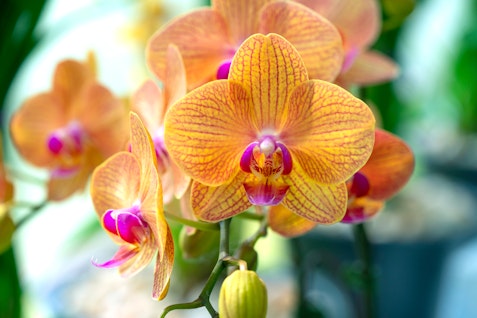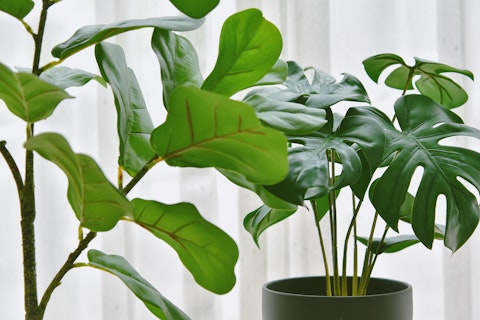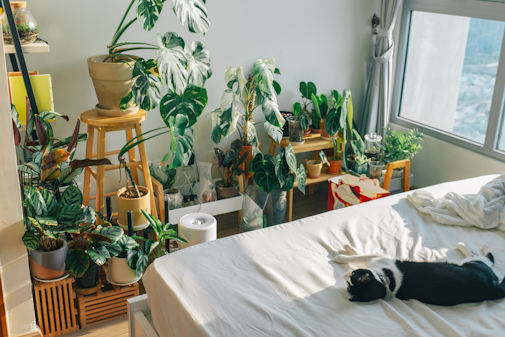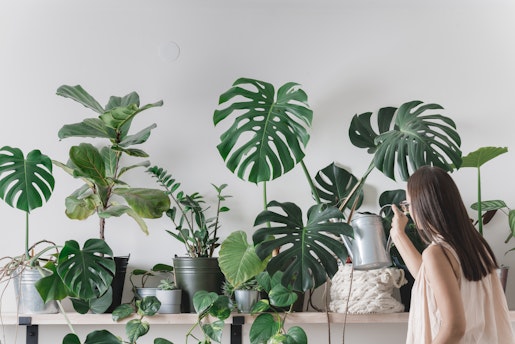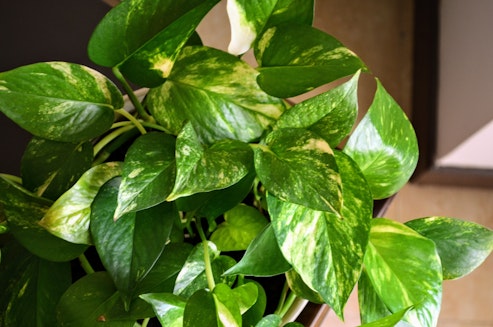
- Home
- A Closer Look at Alocasia
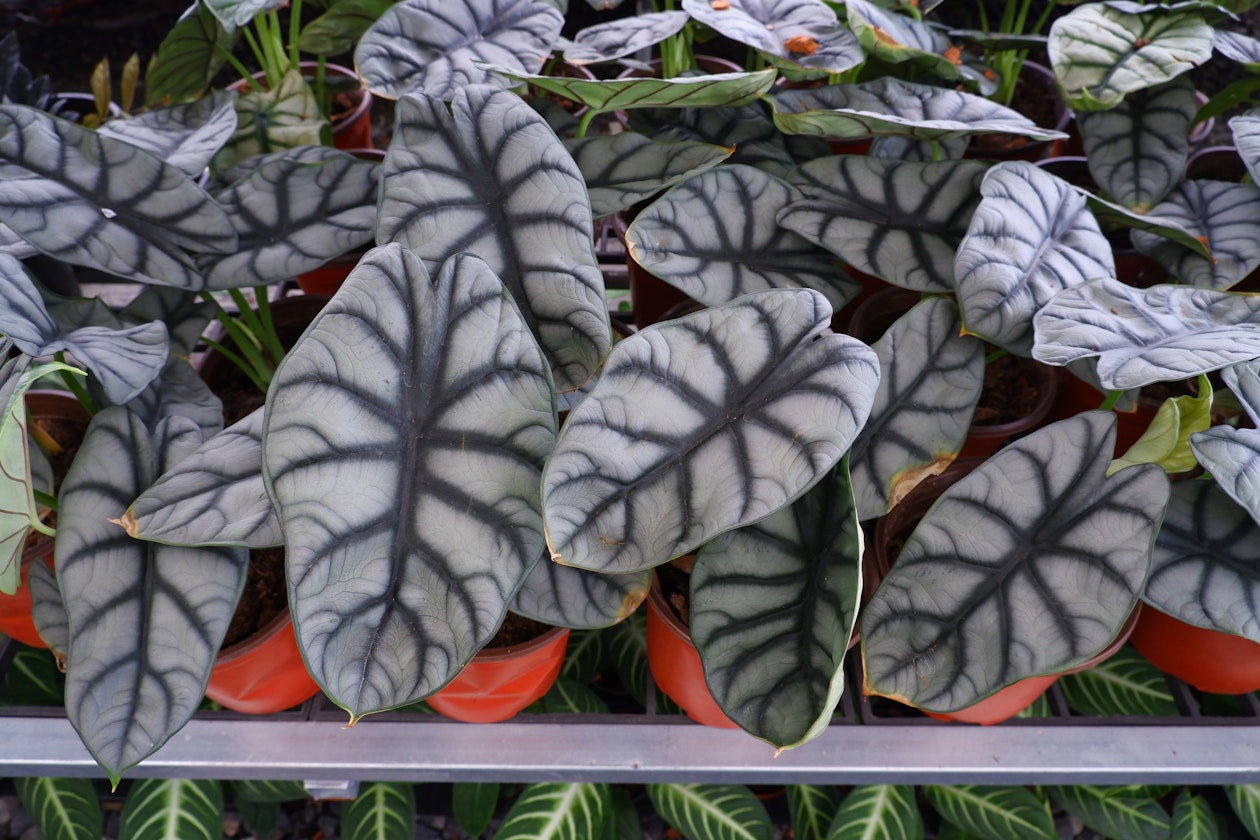
Alocasia is a popular genus of plants from the Araceae family, native to tropical and subtropical regions of Southeast Asia and Australia. They are prized for their bright colours, stunning leaves and interesting forms and shapes. It is commonplace to refer to them as ‘tricky’ plants or label them as ‘hard to keep’ which is likely because they require different care and a little bit more attention than most popular houseplants. Use this guide to get the most out of your Alocasia, and you’ll soon see just how easy it can be!
Care Guide
Watering
Alocasia is famously susceptible to water stress. Its root system is delicate and can rot very quickly if overwatered or left to dry out. Resultantly it is best to ensure that at no point the plant completely dries out, nor should it ever be sitting in stagnant water or soaking wet substrate. The preferred way to water Alocasia is to water from the top of the pot, until water seeps from the drainage holes at the bottom, then leave the plant to fully drain off before returning it to its original place. This should be repeated with little water and fairly often, so as to ensure you always have control of how much water is in the substrate. But it is always better to check your plant and water in response to its conditions, so water as you see the substrate getting dry, or if the plant feels very light when held. During the darker months of winter this watering should be significantly reduced, as the plant’s ability to metabolise is reduced with the lack of light.
Light
While Alocasia enjoys bright sunlight, too much direct sun can scorch its leaves, leaving long-lasting damage and visible stress on your otherwise beautiful plant. This happens very quickly, so it is best to always ensure your Alocasia is in a good spot. Alocasia does its best work under medium or bright, indirect sunlight. A metre or so away from a bright window would be an ideal spot. A few hours of morning sun would not hurt, but the heat of the afternoon sun would likely be too much.
Feeding
Alocasia are not particularly tricky with nutrients, although too much can cause visible damage in nutrient burn. Feed Alocasia with a nitrogen rich plant food, in response to active growth or every 2 or 3 waterings during the summer months. In the winter months, as it gets darker, it is recommended not to feed your Alocasia at all and allow it to rest, unless it is under a grow light.
Potting
Due to Alocasia’s susceptibility to water stress, various growers have taken time to revolutionise the way they are potted. For most, a standard aroid mix of perlite, coir and pine bark is a good mix, as long as watering is done consciously to avoid any significant retention. Some prefer to pot Alocasia straight into clay pebbles, which store any excess water and let the rest drain through. This substrate also gives lots of space for roots and allows lots of airflow around the root system. Others use a combination of perlite and sphagnum moss, which stores water but has natural anti-bacterial and antifungal properties which reduce the risk of rot or mould.
Bloom
Sometimes, in the right conditions, Alocasia will produce an inflorescence. Depending on the grower, this can either be kept or removed, as it is not particularly pretty, and its removal can redirect the energy to growing more foliage. It is likely that while blooming an Alocasia will not produce much, if any new growth.
Temperature/Conditions
Alocasia is a tropical plant from Southeast Asia. Their natural habitat is quite warm year round and is subject to high levels of humidity. While humidity is not essential, having something like a draughty window or a fan blowing on it can quickly dry the plant out. Ideally, an Alocasia should remain between 18-25˚C all year round, and between 50-80% humidity.
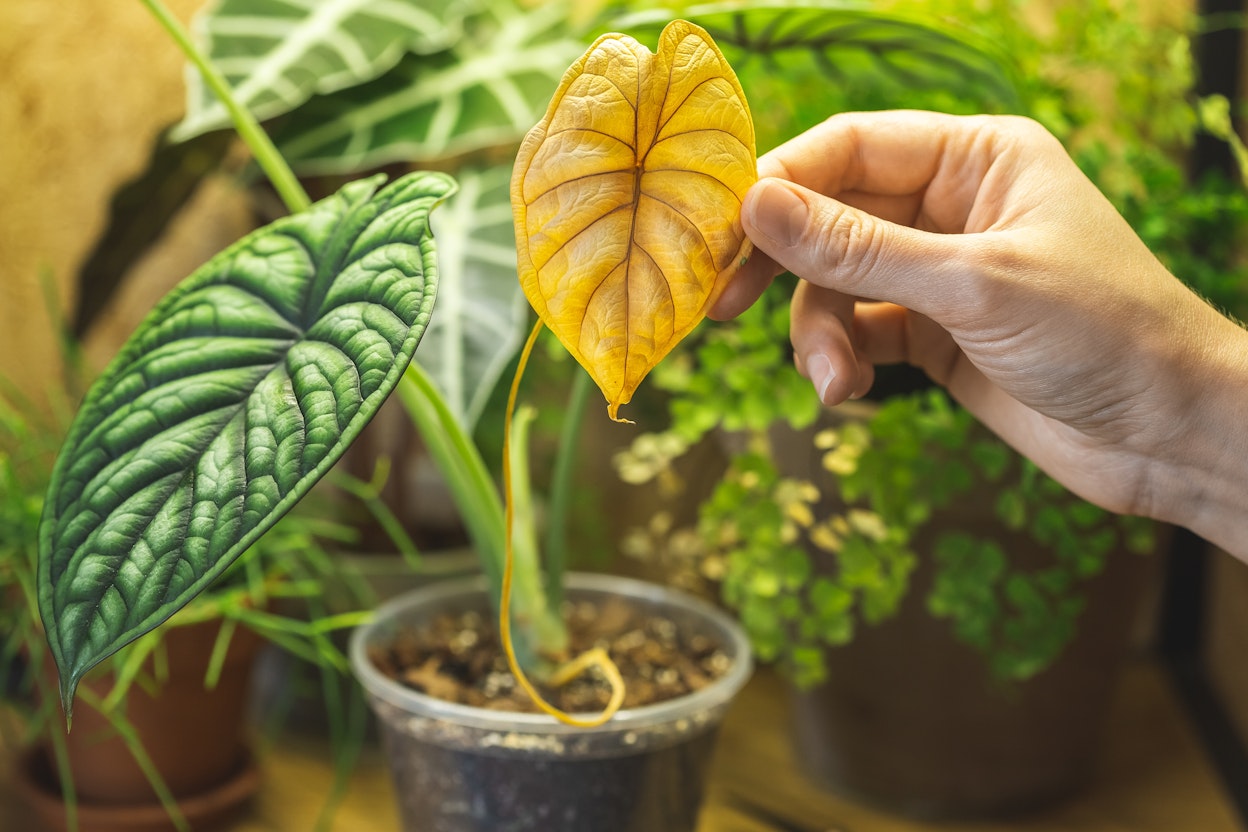
Problems
Pests
Alocasia are not totally pest resistant, and can fall victim to mealybug and scale problems, while thrips, spider mites and aphids can take on the soft, new growth. To avoid pests, keep the plant as strong and healthy as possible, perform regular checks and if pests are found, isolate infected plants and treat accordingly.
Mushy Leaves/Roots
Mushy leaves in Alocasia are usually a sign of water-stress - typically too much water. The mushiness will typically be accompanied by yellowing. The solution to this is to snip off the unhealthy matter and reduce your watering. Problems like root rot can be quickly destructive to an Alocasia.
Wilting
Alocasia is not one of the so-called ‘dramatic plants’, in which their wilting is a handy way to remind you to water. Often, if an Alocasia is looking thin, or its leaves are soft and flaccid to the touch, it is likely that it is in serious need of watering. Often the leaves can turn yellow and lose their structural support, laying flat on the pot or hanging down over it. If this is the case, yellow leaves will never return green and should be removed. However, your wilted leaves may be able to return to firmness if your watering schedule is adjusted. Wilting can also be due to a lack of light, if the wilting seems to be happening quickly, but only on the lowest leaves of the plant, this is quite possibly a response to its light conditions. Often this will be accompanied by mushy roots and an inability to properly take up water.
Common Myths
Organic Waste
A lot of people use banana water, tea bags, coffee beans or tomato water as free fertilisers for their plants. While in theory these contain valuable nutrients for plants, the reality is that they are typically not correctly balanced, and risk over-feeding and shocking your plant with excess nutrients. These excess nutrients can be great food for fungi, flies and microbes that could potentially harm your plant.
Misting
Misting with a spray bottle is an attempt to mimic humidity. However, a consistent humid environment cannot be achieved by using a spray bottle alone, and resultantly spraying a plant is inconsequential. While unlikely, it can cause water to bead on the leaves and intensify sunlight to those spots and leaves scars. Equally, it can create small, hospitable zones for certain fungi and moulds, so it is best to not mist Alocasia religiously. Instead, an option that provides consistent humidity is an ideal solution, such as an electric humidifier. However, these are not a necessary product and an Alocasia would be quite happy without.
Varieties
Alocasia baginda
Alocasia cuprea 'Red Secret'
Alocasia micholitziana 'Frydek'
Alocasia zebrina
Alocasia amazonica
Alocasia macrorrhizos
Alocasia azlanii
Jonathan Davies
Jonny has worked at Root since May 2023. His love for plants was inherited initially from his grandparents and parents, but really took off once he moved into his own place, where he started picking up small plants and was fascinated by watching how they grow and change over time. Jonny has a degree in Archaeology and Classics from the University of Sheffield, and a masters in Egyptology from Swansea University, where he primarily focused on garden culture in the ancient world, which he has managed to extend to a PhD thesis in the University of Liverpool, where he has been able to combine his love for plants with his love for ancient language and culture. Jonny loves being in the natural spaces around North Wales and Cheshire where he used to go growing up, and often spends hours examining the plants and trees, and kicking up the leaf litter searching for mushrooms and insects. He is fascinated most by plant biology, taxonomy and learning about ecosystems and interactions between plants and their environmental counterparts, and enjoys tending to his varied array of houseplants, and ongoing ‘plant projects’, such as growing plants from seeds and creating living epiphyte displays. Aside from his green thumb, his other interests include: art, reading, listening to and playing music in the company of his cats, Spooky and Boo.
More by Jonathan DaviesRelated Articles
View all articles
